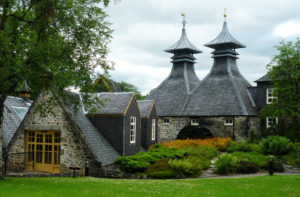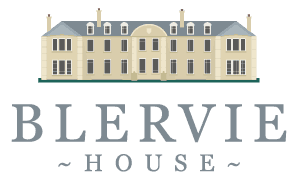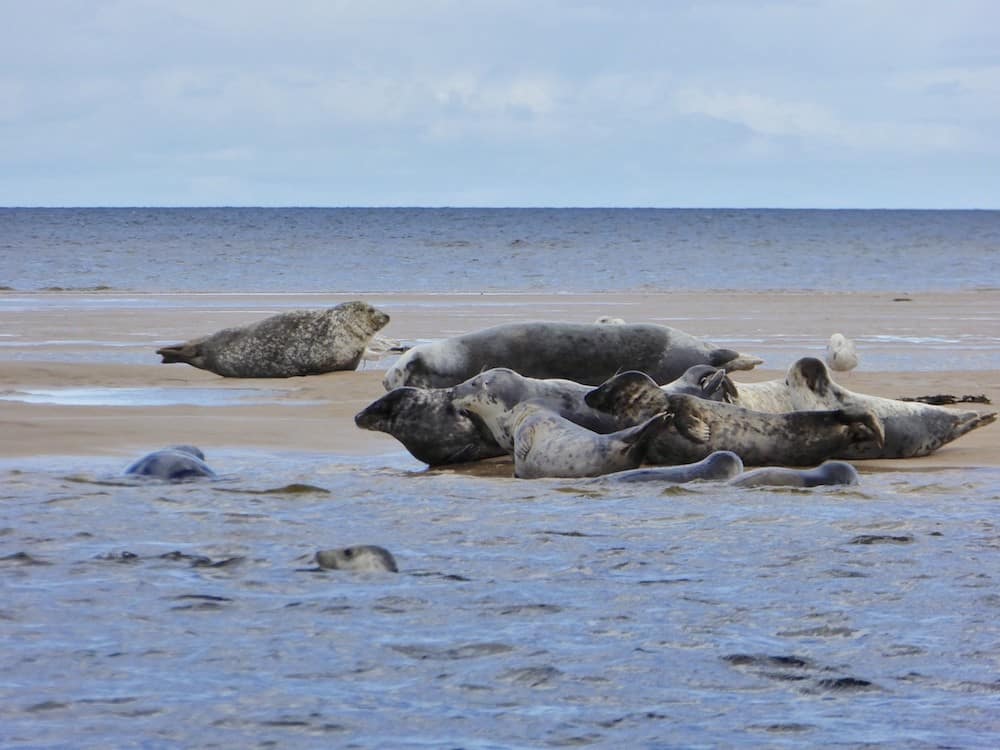S is for Seals, and Speyside Distilleries make up a big part of this stunning part of Scotland sitting on the Moray Firth.
Seals
The seals are never far away; that is the beauty of being on this Coastline, recognised by National Geographic as being one of the most unspoilt in the World. From us, take the short drive down to Findhorn Beach, and walk past the harbour and over the dunes. Before you get there, you may very well hear them. This area is a designated Haul-Out site for the seals, meaning it is a protected area for them to rest, moult or breed. Depending upon where the tide is, they will either be lounging around on the sand bars or bobbing up and down in the water.
This is the mouth of the Findhorn River, so they are in the perfect spot for some Salmon fishing here. If you want to look at them closely, I recommend you take a trip out with North 58 Adventures and have your camera ready as you go past.
Speyside
You can associate seals with the River Findhorn, but many of our world-famous Malt Whisky Distilleries are associated with the River Spey. When reviewing scotch regions, everyone thinks of Speyside as a region in its own right. Still, technically it is a sub-region of the Highlands, which explains why some Speyside distilleries choose to label their whisky as Highland – think Glenfarclas or Macallan. Most of northern mainland Scotland is classified as the Highlands. Speyside is a triangular section with the Highlands to the west, Aberdeenshire to the east and extending north to the Cairngorms National Park. However, Speyside single malt scotch whisky is renowned worldwide, and this is your opportunity to see how scotch is made.

However, you choose to define Speyside with over 50 distilleries and producing some 50% of Scotland’s whisky, it is a magnificent area to visit and draws people from all over the World. These distilleries draw upon the fresh soft Scottish Spring Waters that make their way to the Spey, meaning many of these Distilleries are alongside the river banks. Think of Aberlour, Glenlivet and Glenfiddich. These scotches tend to be sweeter and fuller, with the taste of caramel and nuts or even floral and citrusy notes often absent of the peaty flavoured whiskies.
Take the time to visit at least one of these distilleries. Enjoy the rich aromas of malting grains, and sample the rich, diverse flavours of amber nectar. Admire the colours, and absorb the ambience. This part of Scotland has been producing whisky since taxation was introduced in 1791 and before. Strathisla is the oldest distillery and has been functioning since 1791. Visit at the right time of the year, and you can see the Salmon leaping on their way home.

So while some things do not change, such as the disputes continue regarding tariffs and taxation – what does change is the experience and expertise you experience first-hand at one of these distilleries. I cannot even recommend a favourite tour because they are all unique. If you have a favourite whisky, then that is the first distillery you should visit, and it is very likely on Speyside.
Speyside Cooperage
While you explore the Speyside Distilleries, be sure to make the time to visit the Cooperage. Here you can watch the Coopers fashioning the barrels that hold the amber nectar for its maturation. The woods and the flavours that make up these barrels are priceless, and each Distillery guards its own with great care. You have to admire the professional expertise of the Coopers, and indeed one of them is a World Record Holder. And all part of Speyside.

Seals and Speyside
This county of Moray is unusual insofar as it has such a dramatic Coastline, plentiful majestic Mountains and Moorlands and a superb concentration of world-class whisky distilleries within a short drive. This geographical location means that is why we have our Seals and Speyside Distilleries.


